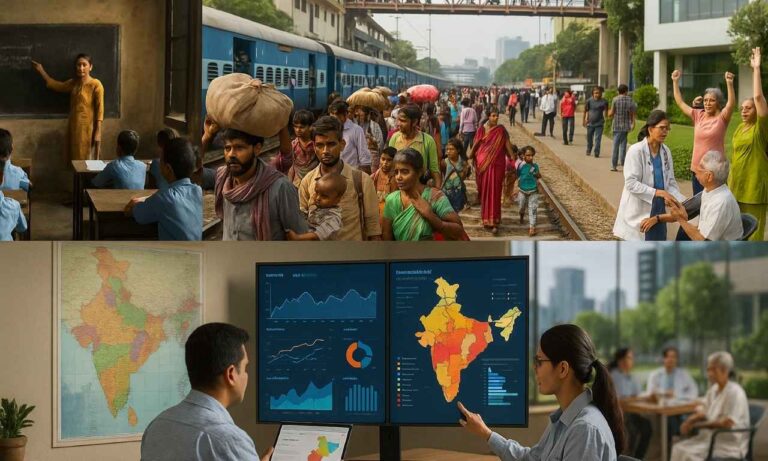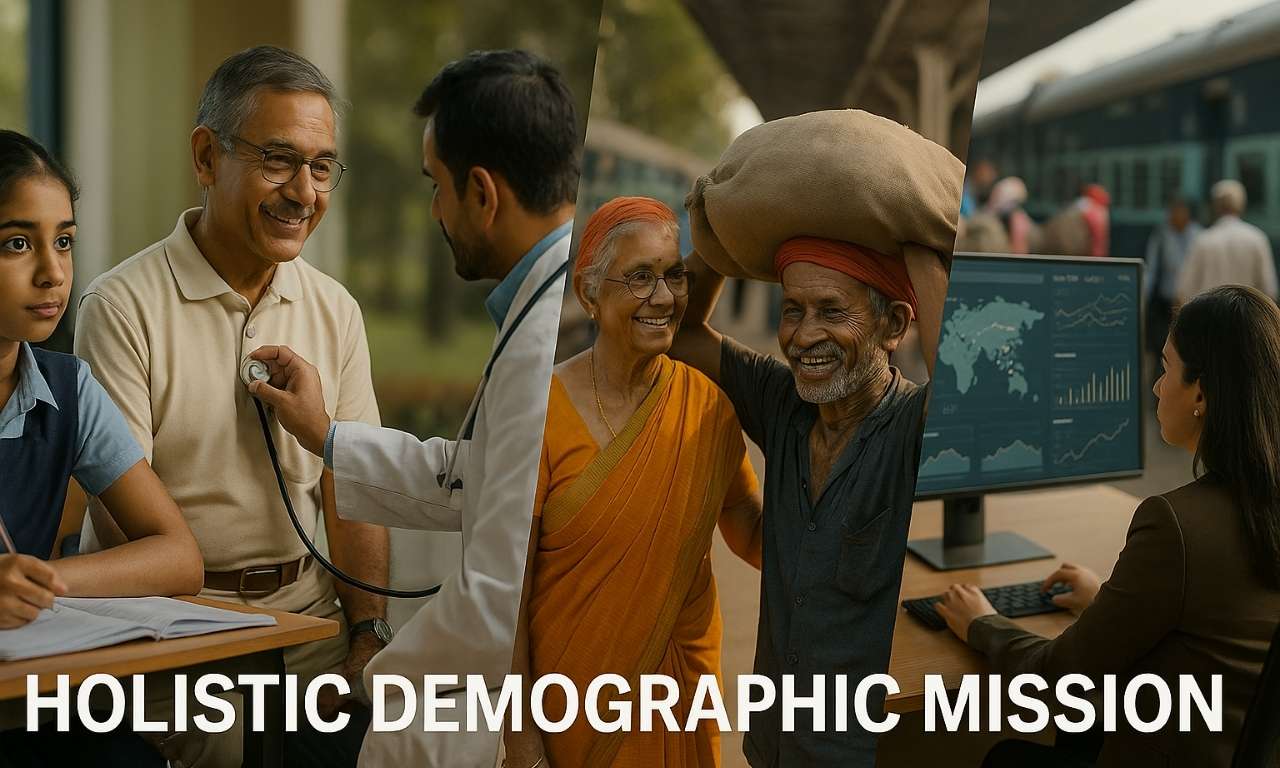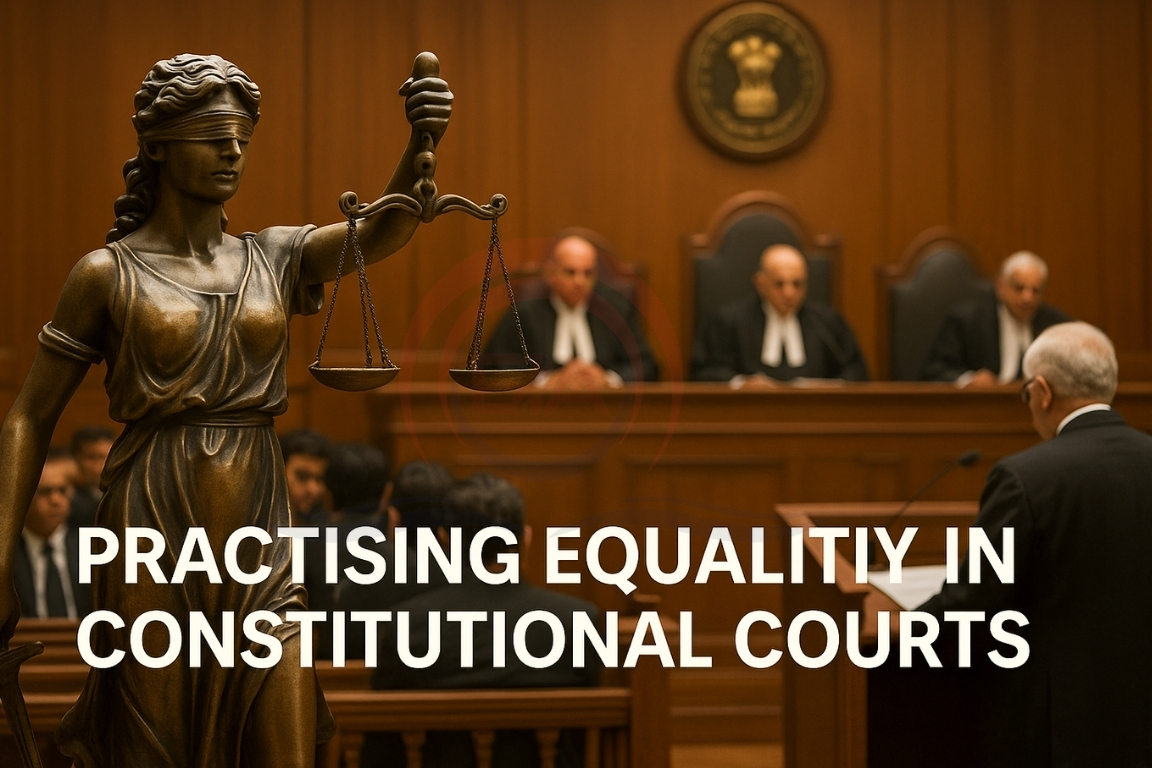On August 15, 2025, the government announced a demographic mission focusing on undocumented immigration from Bangladesh.
Background and Context
- India, now the world’s most populous nation, has a large youth population that presents both opportunities and challenges.
- Past demographic policies mainly focused on population control, ignoring broader aspects like migration, ageing, education, and skill development.
- A holistic demographic mission is essential to ensure balanced growth and equitable human development across regions.

Need for a Broader Demographic Vision
- The new mission should go beyond monitoring population numbers or immigration.
- It must assess demographic changes over the past two decades, focusing on:
- Fertility and mortality patterns
- Migration flows within and outside India
- Age-sex distribution and regional disparities
- The mission should also study how education, health, and livelihoods are shaping India’s human capital.
Unequal Human Capability Development
- Education and skill infrastructure are unevenly distributed across regions.
- The gap between affluent and less privileged groups in accessing quality education and employment is widening.
- Without equitable human capability development, India’s dream of becoming a global skill hub may remain unfulfilled.
Migration: The Balancing Factor
- Migration has become a key factor balancing population and workforce distribution among States.
- However, migrant identity and rights remain politically sensitive issues.
- Migrants often face dual disenfranchisement — they lose voting rights both in their home and host States due to unclear residency rules.
- The demographic mission should focus on restoring migrants’ rights, ensuring equality and recognition for internal migrants.
Ageing and Social Security Challenges
- With increasing life expectancy, India needs to redefine the concept of productive years.
- Both the young and elderly can contribute productively if supported by healthcare and active ageing policies.
- Social security systems must evolve — employers and individuals should share responsibility with the State for post-retirement financial stability.
Integrating Demographics into Policy
- Every policy and development plan should be demography-sensitive.
- Planning should consider population composition, not just per capita averages.
- Demographic data should guide resource allocation, policy design, and evaluation to ensure inclusion and sustainability.
Way Forward
- Launch a National Demographic Mission with multidisciplinary focus — linking population trends to education, employment, and migration policies.
- Strengthen data systems for real-time demographic monitoring.
- Promote awareness and research on demographic changes and their impact on governance.
- Foster cooperative federalism to address regional demographic imbalances.
Conclusion
India’s demographic mission must shift from a narrow focus on population control to a broad, human-centered approach. Recognising shifts in fertility, ageing, and migration — and investing in education, health, and social protection — will help India transform its vast population into a true demographic dividend for sustainable growth.
This topic is available in detail on our main website.





